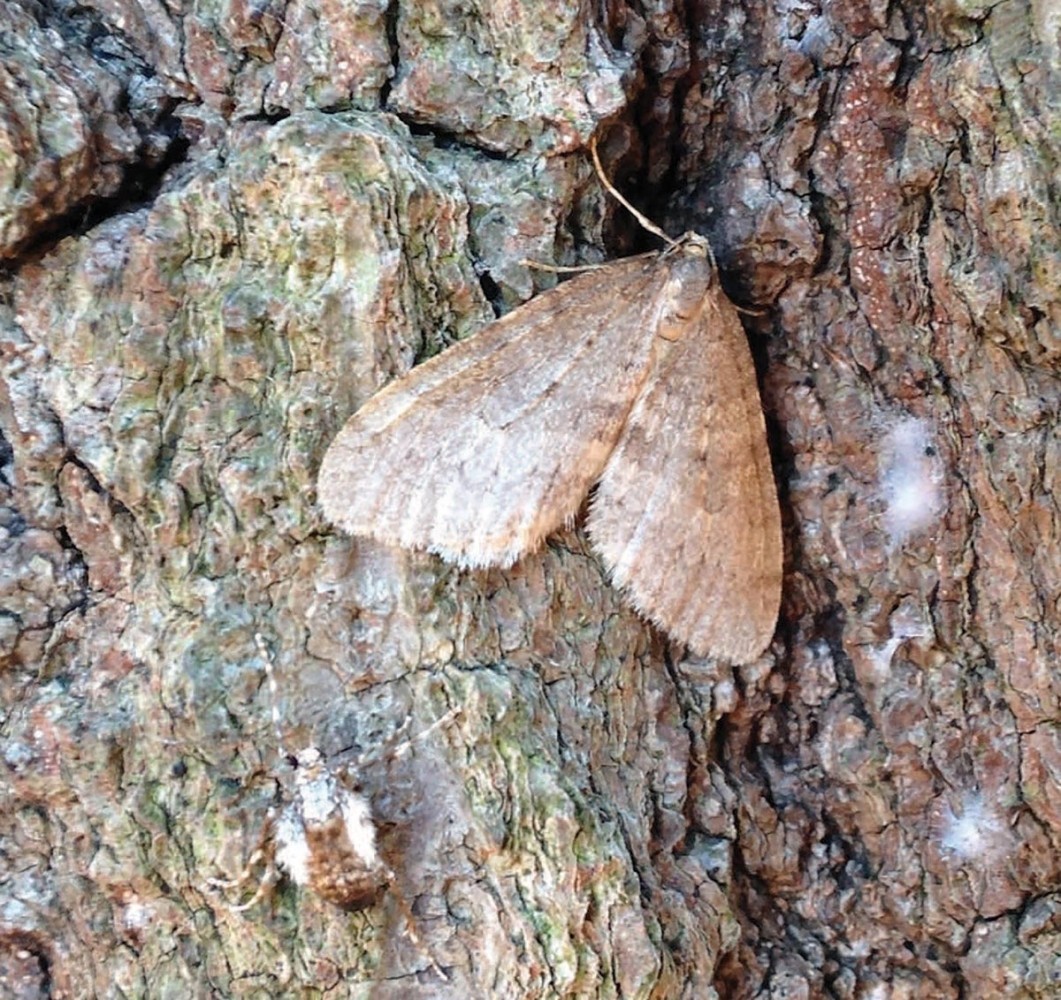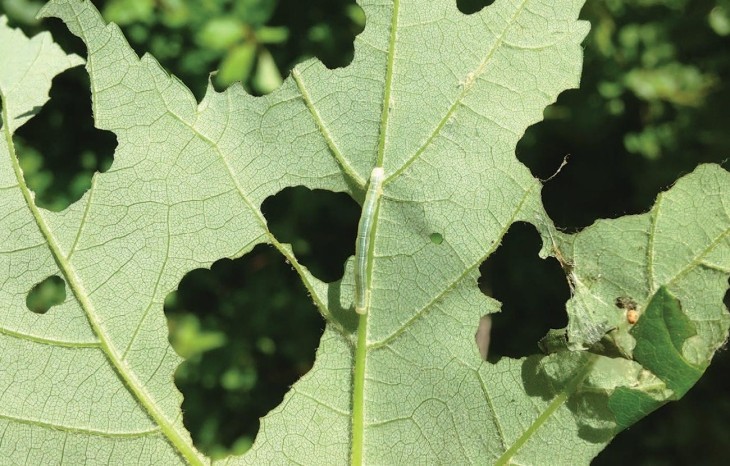
Winter in the Northeast is a time of dormancy for most insects, but you may have noticed an increase of tan-colored moths fluttering around your porch light as the days grow shorter. These may be one or more of three nearly indistinguishable moth species: two native and one invasive exotic. Fall cankerworm (Alsophila pometaria) and Bruce spanworm (Operophtera bruceata) are native springtime defoliators of hardwood trees that mate from late fall through early winter when temperatures are above freezing. The New England seacoast has also been inundated recently by a very similar species: the invasive winter moth (Operophtera brumata) from Europe. Trapping surveys in the Northeast have confirmed winter moth populations on Long Island, New York; in southeast Connecticut; most of Rhode Island; eastern Massachusetts; and coastal areas of New Hampshire and Maine.
Winter moths are active at the same time as the native species and are not easily distinguishable without dissection or DNA analysis. Bruce spanworm and winter moth – of the same genus (Operophtera) – are so similar that they sometimes mate with each other, resulting in hybrid moths. Adult female winter moths are wingless and lay eggs in tree bark crevices. The eggs hatch, typically at or just prior to bud break, and tiny green larvae crawl up the trees and nestle into emerging buds to feed on flowers and foliage. Larvae feed through May and drop to the soil in June to pupate. Hosts include many hardwoods including oak, maple, ash, basswood, birch, elm, cherry, apple, and blueberry.
Documented in Massachusetts in 2003, winter moths were likely introduced to the East Coast in the 1990s via cargo ships. When an organism is introduced to a new ecosystem, it has no natural enemies. This allows non-native pests – such as winter moth – to establish in high numbers that overwhelm their hosts, leading to the hosts’ mortality. A team of entomologists, researchers, and graduate students at the University of Massachusetts’ Elkinton Lab is working hard to win the battle against winter moths. The lab, run by Joseph Elkinton, has been releasing fly parasitoids (Cyzenis albicans) since 2005 in an attempt to establish a biological control for winter moths in New England. Similar efforts were initiated in Nova Scotia in the 1950s after the first introduction of winter moths in North America had caused significant damage in Canada. A decade after the initial release of the predatory flies, this effort was considered a success, as winter moth populations in Nova Scotia declined.
Additional introductions of winter moths – in Oregon in the 1950s and western Canada in 1970 – are also being successfully managed by C. albicans. The predatory flies released by Elkinton Lab are either reared at the USDA Otis Lab in Massachusetts or collected on Vancouver Island, British Columbia. Releases have been made in Rhode Island, Connecticut, Massachusetts, and Maine.
Biological controls can have limitations and be difficult to establish, but they are often the most effective way to manage invasive pests. A great example is the fungus Entomophaga maimaiga – released to control spongy moths (Lymantria dispar) – which took nearly 80 years to establish. While there are other spongy moth predators, there was a significant reduction in tree defoliation once the fungus began to work. The fungus, which kills spongy moth caterpillars, is a highly effective control as long as there is sufficient spring rainfall. Spongy moth populations in the Northeast have rebounded in recent years due to drought conditions, but should drop again following a wet spring. As for C. albicans, it can take a decade for population densities to reach the level where they are effective at controlling winter moths.
C. albican lays its eggs on leaves that are being consumed by winter moth larvae. The winter moth larvae consume the fly eggs, which then hatch inside the caterpillar; the immature flies remain there as the caterpillars pupate in the soil. Winter moth pupae are killed as the flies complete development. Adult flies emerge in the spring to mate and lay eggs. As a result, winter moth pupae densities are reduced in the soil, which allows for additional control by native predators such as ground beetles and shrews. After many years of fly releases in New England, C. albicans is now widely distributed, and winter moth populations in New Hampshire, Massachusetts, and Rhode Island are no longer causing noticeable defoliation. Elkinton Lab is now focused on achieving the same success in coastal Maine. Thanks to all their hard work, this exotic, invasive pest story seems to have a happy ending.


